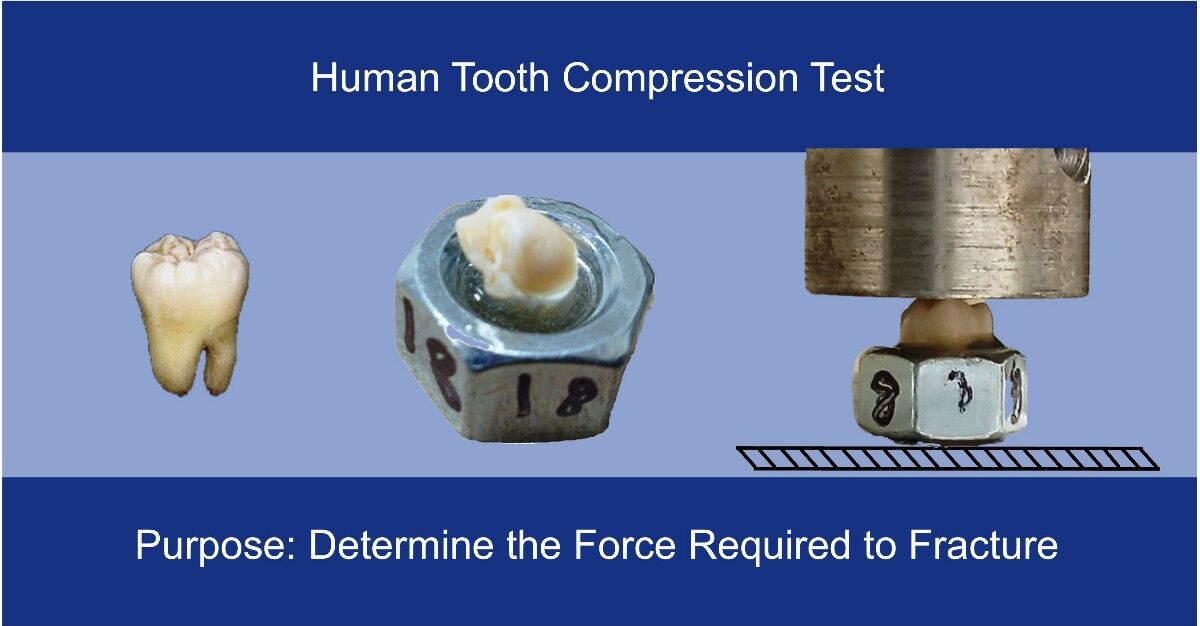WESTPAK has always taken pride in our support of students and academia. When Herb Schueneman founded Westpak in 1986, he was also lecturing at the San Jose State University’s School of Packaging. That teaching, both a calling and passion for Herb, continued for 30 more years. So it comes as no surprise that Herb’s successor CEO, Nora Crivello, continues to honor the tradition of supporting higher education.
Nora recently received a call from an old friend and college roommate asking, “Do you have machines that compress things?” Her friend, Kimberly Quaranta, is an Associate Professor of Biology at Arizona State University. A senior in one of her advanced biology classes was looking to do a research project on the compressive strength of healthy and unhealthy human molars in his bid to enter dental school. Nora was happy to volunteer WESTPAK’s resources to support student Keaton Henscheid and his thesis entitled “Comparing the Compressive Strength Between Decayed and Healthy Teeth.”
The purpose of the study was to determine the average failure point of the teeth when subjected to a constant compressive force. Both ‘healthy’ and ‘unhealthy’ teeth would be tested.
A dentist and supporter of Keaton collected and provided the molar test samples. WESTPAK’s Josue Campos, Test Engineer II, volunteered his time and assisted. First, Josue mounted each tooth vertically in a hex nut using epoxy to secure them for testing. Once cured, the epoxied samples were fixtured to a universal test machine (UTM) with its crosshead speed set to a snails-pace rate of 0.05 inches per minute.
After ensuring safety shields were in place for the team, compression started; the machine’s software created force vs. displacement plots (ref: Figure 1).
The results were not as consistent as one would expect, partly due to the small sample quantity, but primarily the inconsistency in the shape of the teeth (i.e., peaks). Thus, the compressive force could not be applied consistently to all the samples. Re-orienting the teeth to facilitate more equal loading (i.e., sideways) would be inconsistent with way the teeth are rooted in one’s jaw, so we passed on that. Keaton is considering further study on how diet and lifestyle play a role in these results, including smoker vs. nonsmoker.
At WESTPAK, we conduct peel testing with the UTMs using tensile force on hundreds of samples per day. However, these machines and their army of attachments are capable of performing a much broader set of testing.
These “what if?” type questions from our customers such as
“How much force does it take to turn this lever?”
“How much force can this component withstand before it breaks off?”
“What does it take to poke a hole through this material?”
“Will this cloth seam stay intact with a 100-pound load pulling on it?”
give our team of mechanical and packaging engineers something they really enjoy sinking their teeth into (pun intended). They are so smart and creative, and especially like challenges.
We enjoy and support all inquiries and are ready to dive into your “what if” questions. So, reach out to us today on our Customer Portal to discuss a project with our Engineering Services team.
In the meantime, do what your mom and dentist say: Brush your teeth twice a day and don’t forget to floss!
Best of luck in dental school, Keaton!
